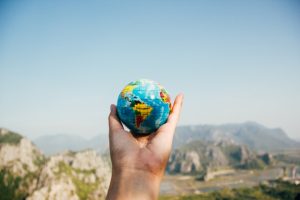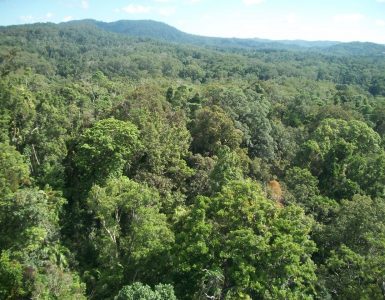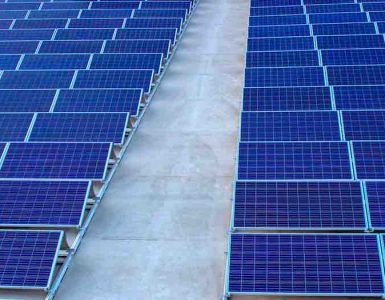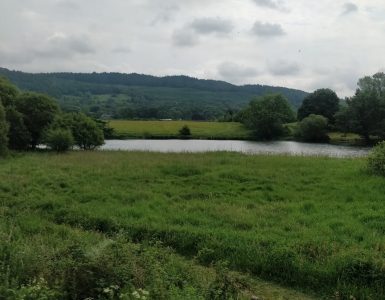In 1987, nations around the world, in an act of unison, came together to avert a major environmental disaster that was about to strike our planet.
We constantly hear about the government’s inactions toward environmental protection; there is an event in our history that would be known as a landmark moment for humanity when governments from many countries came together to protect the planet.
It was 16th September 1987, and 30 countries signed the Montreal Protocol.
The background story of the Montreal Protocol
Refrigerators became an increasingly popular household appliance by the early 20th century. But, their coolant was so toxic that a leak could immediately kill someone. That led to the invention of chlorofluorocarbons (CFCs), which were safe for humans and widely adopted in refrigerators, air-conditioners, and other appliances.
On the other side, between the 1970s and the 1980s, the international community became worried about discovering the ‘ozone hole’ over Antarctica and the damaging effects of ozone-depleting substances (ODS) on the ozone layer.
One of these ozone-depleting substances (ODS) was chlorofluorocarbons (CFCs).
If the ozone layer, earth’s natural sunscreen, was not attended to, ultraviolet rays from the sun could have severely harmed the human race – causing skin cancer, premature aging, cataracts, and many other health problems to humans and plants and animals.
Following this, in 1985, the Vienna Convention was adopted to work as an international cooperation to protect the ozone layer.
The Vienna Convention was the first step in international efforts to protect the stratospheric layer of the atmosphere, and it served as a framework for measures to protect the globe’s ozone layer.
The Montreal Protocol sits under the Vienna Convention for the protection of the Ozone Layer, and by 2008, it was ratified by every country in the world, making it a landmark agreement.
What is Montreal Protocol


Montreal protocol was a welcome relief for the global community trying to keep the earth safe. This was a united global effort to stop the production of ozone-depleting substances (ODS) and reduce their concentration in the atmosphere to help protect the Earth’s ozone layer.
The Montreal Protocol sets out a mandatory timetable for ODS production and consumption to eliminate them completely.
The Montreal Protocol sets binding progressive phase-out obligations for developed and developing countries for all the major ozone-depleting substances, including chlorofluorocarbons (CFCs), halons, and less damaging transitional chemicals such as hydrochlorofluorocarbons (HCFCs).
It was agreed that developed countries would phase out chlorofluorocarbons in 1993 and achieve a 20% reduction relative to 1986 consumption levels by 1994 and a 50% reduction by 1998.
This timetable has been reviewed regularly, with phase-out dates accelerated following scientific understanding and technological advances.
The Montreal Protocol requires the control of approximately 100 ozone-depleting chemicals in thousands of applications across more than 200 industrial sectors. In 2016, the Montreal Protocol also became responsible for binding progressive phase-down obligations for the 18 main hydrofluorocarbons (HFCs).
Amendments to the Montreal Protocol
Over the next few years, the Montreal Protocol has been strengthened through various amendments, which have suggested altering schedules and adding new substances to the list. Here are the amendments that have occurred since the Montreal Protocol. (Source: EPA)
The London Amendment (1990) changed the ODS emission schedule by requiring the complete phaseout of CFCs, halons, and carbon tetrachloride by 2000 in developed countries and by 2010 in developing countries. Methyl chloroform was also added to the list of controlled ODSs, with phaseout in developed countries targeted in 2005 and in 2015 for developing countries.
The Copenhagen Amendment (1992) significantly accelerated the phaseout of ODSs and incorporated a hydrochlorofluorocarbons (HCFC) phaseout for developed countries, beginning in 2004. Under this agreement, in developed countries, CFCs, halons, carbon tetrachloride, and methyl chloroform were targeted for complete phaseout in 1996. In addition, methyl bromide consumption of methyl bromide was capped at 1991 levels.
The Montreal Amendment (1997) included the phaseout of HCFCs in developing countries and methyl bromide in developed and developing countries in 2005 and 2015, respectively.
The Beijing Amendment (1999) included tightened controls on the production and trade of HCFCs. Bromochloromethane was also added to the list of controlled substances with phaseout targeted for 2004.
The Kigali Amendment (2016) extended controls to phase down the production and consumption of hydrofluorocarbons (HFCs) because industries adopted these substances in moving away from ozone-depleting substances, and they are potent greenhouse gases damaging to the earth’s climate.
Montreal Protocol Impact
Implementation of the Montreal Protocol progressed well in many, and the schedules were mostly adhered to, and some were even executed in advance.
Around 99 percent of ozone-depleting substances have been phased out and restored to the layer above Earth. In addition to helping protect the ozone layer, the Montreal Protocol has also helped reduce the amount of greenhouse gases going into the atmosphere.
The agreement that came into force in 1989 is regarded as one of the most successful global environmental agreements. To mark this occasion, on 16 September, the anniversary of the Montreal Protocol is celebrated as International Day for the Preservation of the Ozone Layer.
Watch this animated film that imagines what would have happened if the ozone layer had not been saved. What would the world look like without saving the ozone layer? It’s 2084, and the disease known as the GROW has taken over. Three teenagers, Knox, Sagan, and Terran, find themselves on an epic adventure to save themselves and the world.






Add comment